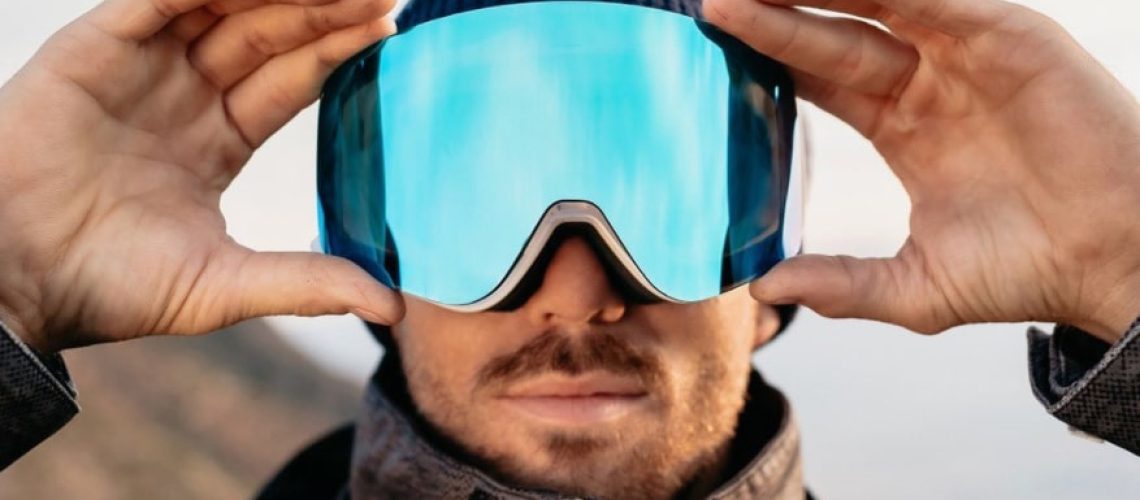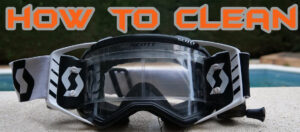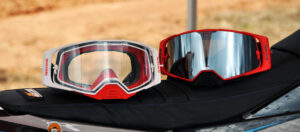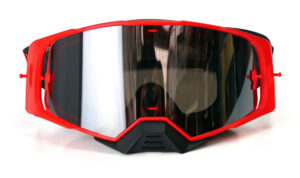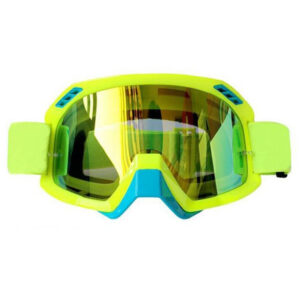Polarized ski goggles are special types of ski glasses whose lenses are made of polarizing filter material. This lens can effectively reduce reflection and glare, allowing you to see details and outlines on the snow more clearly on sunny days. Polarized ski goggles usually also provide excellent protection from snow, rain, and other impurities from entering the eyes.
What are the characteristics of polarized snow goggles?
Polarized ski goggles have the following features:
- Reduced glare and reflections: Polarized lenses filter out light in the horizontal direction, reducing glare and reflections, allowing you to see outlines and details on the snow more clearly.
- Protect your eyes: The lenses in polarized ski goggles are usually made of high-quality materials that provide excellent protection from snow, rain, and other impurities from entering your eyes.
- Multiple Color Options: The lenses of polarized ski goggles usually have multiple color options to suit different light and weather conditions, such as cloudy and sunny days, to improve the clarity of vision and comfort.
- Anti-fog function: Polarized ski goggles usually have anti-fog function to ensure that your vision will not be affected in the event of humidity or drastic temperature changes.
Under what circumstances is it suitable to use polarized snow goggles?
Polarized ski goggles are a kind of ski goggles with polarized light function, suitable for use in the following situations:
- In sunny weather, polarized ski goggles can filter out the clutter in the light, allowing you to see the outlines and textures on the snow more clearly and improve the clarity of vision.
- When sliding on the snow, the reflected light will be strongly reflected into the eyes, causing a dazzling feeling. Polarized ski goggles can effectively reduce the impact of reflected light, allowing you to slide more comfortably.
- Polarized ski goggles can also reduce glare, avoid eyestrain and eyestrain.
In conclusion, polarized ski goggles are a very good choice if you like to ski in sunny weather and want to protect your eyes and improve the clarity of your vision.
What is the difference between polarized ski goggles and non-polarized ski goggles?
The difference between polarized ski goggles and non-polarized ski goggles is mainly in their lens design and function.
- Lens design: The lens of polarized ski goggles has a polarizing film, which can filter out the messy light in the light, prevent the occurrence of reflection and refraction, and improve the clarity of vision. The lenses of non-polarized ski goggles have no polarizing film, just general protective lenses.
- Function: Polarized ski goggles can effectively reduce reflected light, glare and glare, improve the clarity of vision, and allow you to slide more comfortably. Non-polarized ski goggles cannot filter out clutter in the light, and cannot effectively reduce reflected light and glare.
To sum up, polarized ski goggles are more suitable for use in sunny weather than non-polarized ski goggles, which can improve the clarity of vision and reduce the impact of glare and reflected light. At the same time, due to the high technical content and manufacturing cost of polarized ski goggle lenses, the price is relatively more expensive.
Why choose polarized ski goggles?
The main reasons for choosing polarized ski goggles are as follows:
- Reduce the impact of glare and reflected light: In strong sunlight, reflected light and glare will seriously affect vision and comfort. Choosing polarized ski goggles can filter out these lights and reduce their uncomfortable effects on vision and body.
- Improve the clarity of vision: Polarized ski goggle lenses have polarized film, which can filter out the clutter in the light, making the vision clearer and brighter, and it is easier to distinguish the outlines and textures on the snow.
- Eye protection: Polarized ski goggles can effectively filter out harmful rays such as ultraviolet rays and blue light, avoiding damage to the eyes and protecting eye health.
- Improve skiing experience: Choosing suitable polarized ski goggles can not only improve the clarity of vision, reduce the impact of reflections and glare, but also make the entire skiing experience more comfortable and enjoyable.
In short, choosing polarized ski goggles can make you slide more safely and comfortably in strong sunlight, and improve the clarity of vision and skiing experience.
How to identify polarized ski goggles?
Polarized ski goggles are lenses specially designed for snow sports that reduce glare and reflections and improve clarity and contrast of vision. Here are some ways to spot polarized ski goggles:
- Test with a light source: Take the lens, rotate it 90 degrees, and point it at a line or light source. If the lenses are polarized, you will see changes in the brightness of the line or light source across the lens. This is because polarized lenses can filter out light in certain directions, and only let the light passing through present a certain direction, thereby reducing glare and reflection.
- Look at reflective objects: Look at objects that reflect off the lens, such as windows, vehicles, or other shiny surfaces. If the lenses are polarized, you will see changes in the color and shape of the reflected objects because polarized lenses reduce the reflected light.
- Ask a salesperson: If you’re not sure how to identify polarized ski goggles, ask a salesperson. They can show you the various types of ski goggles and explain their features and functions.
In short, the best way to identify polarized ski goggles is to observe them under different light sources, or ask the salesperson for accurate information.
How are polarized ski goggles produced?
Polarized ski goggles are produced through a special manufacturing process, the following is the general production process:
- Cutting the lens: First, it is necessary to use a machine or manually cut the raw material of appropriate thickness into a lens that meets the specifications.
- Surface treatment: The surface of the lens needs to be ground, polished, etc. to ensure that the surface of the lens is smooth and smooth, and to increase wear resistance.
- Coating treatment: Next, the lens needs to be coated, including anti-reflection coating and polarizing coating. The anti-reflection coating can increase the light transmittance of the lens, and the polarizing coating can filter out light in a specific direction to reduce glare and reflection.
- Bonding: Next, the two lenses with the polarized coating need to be bonded together. This process needs to control factors such as pressure, temperature and humidity during bonding to ensure bonding quality.
- Cutting and forming: The bonded double-layer lenses need to be cut and formed to fit the shape and size of the spectacle frame.
- Inspection and packaging: Finally, the finished polarized ski goggles need to be strictly inspected to ensure that they meet the relevant quality standards, and then packaged for sale.
Generally speaking, the production process of polarized ski goggles needs to use a variety of technologies and materials, and fine production technology and quality control are the key to ensure its quality and performance.
How to maintain polarized ski goggles?
Proper care of polarized ski goggles can prolong their life and maintain their performance and appearance. Here are some ways to care for polarized ski goggles:
- Cleaning the lenses: Use a special lens cleaner or warm water to wash the lenses and dry them with a soft cloth. Do not use paper towels or clothing to wipe the lens, as this may scratch the surface of the lens.
- Storage method: Put the polarized ski goggles in a special glasses case to avoid friction and collision with other items, so as not to damage the lens surface.
- Prevent pollution: try to avoid contact with grease, cosmetics and other items that are easy to contaminate the lens, so as not to affect the light transmission and clarity of the lens.
- Avoid high temperature and low temperature: Avoid placing polarized ski goggles in high temperature and low temperature environments, so as not to affect the performance and life of the lens.
- Maintain the frame: Regularly check whether the frame of polarized ski goggles is damaged or deformed, and replace or repair it in time.
In conclusion, proper maintenance methods can prolong the service life of polarized ski goggles and maintain their performance and appearance. It is recommended to follow the above method for maintenance, and replace the lens or frame regularly as needed.

